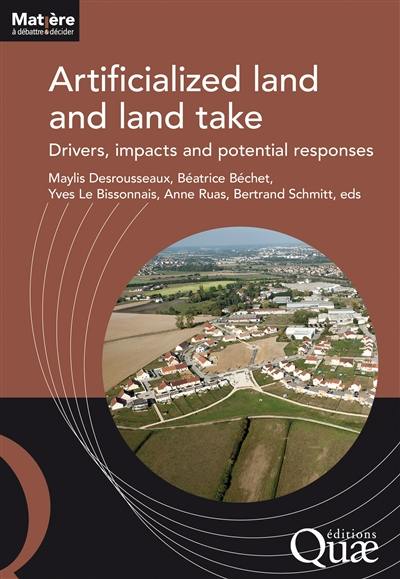
Collection(s) : Matière à débattre et décider
Paru le 25/11/2023 | Broché 167 pages
Professionnels
Soil artificialization is a recent concept, initially responding to the concern to quantify the loss of land available for agricultural use through changes in land use. Today, it refers to the overall reduction in the proportion of land devoted to agricultural and forestry activities or to natural areas, thus going beyond the strictly agricultural dimension.
Land artificialization and land that has already been 'artificialized', have become, particularly in France, a major issue of public debate and political concerns. Land artificialization is thus seen as one of the main factors in the erosion of biodiversity, which explains why, since 2015, the rate of land artificialization is one of the 10 « Wealth Indicators » developed by the Government to monitor its public policies.
In this context, the French Ministry of Ecology, the French Agency for Ecological Transition (ADEME) and the French Ministry of Agriculture, Agrifood, and Forestry wanted to have access to scientific knowledge that would enable them to better identify the economic and social determinants of soil artificialization, its impacts on the environment and on agriculture, and the levers for action likely to limit its development and negative effects. They entrusted IFSTTAR (now université Gustave Eiffel) and INRA (now INRAE) with the task of carrying out this collective scientific expertise. The main conclusions are presented in this book first published in French in 2019.
Maylis Desrousseaux is a lecturer in environmental law at the Conservatoire national des arts et métiers. Her work focuses on legal levers for soil protection.
Béatrice Béchet is a researcher at université Gustave Eiffel working on soil pollution in the context of urban development, and Director of the Institut de recherche sur les sciences et techniques de la ville (IRSTV).
Yves Le Bissonnais was Director of Research at INRAE and a member of the scientific and technical council of the Réseau national d'expertise scientifique et technique sur les sols (RNEST).
Anne Ruas is a researcher at université Gustave Eiffel in the field of geomatics. Her research focuses on the urban environment in the context of climate change.
Bertrand Schmitt was Director of Research in Economics at INRAE. His research has focused on the determinants of development in rural and peri-urban areas and various agricultural issues. He headed the Delegation for Expertise, Foresight and Advanced Studies (DEPE) at INRA.